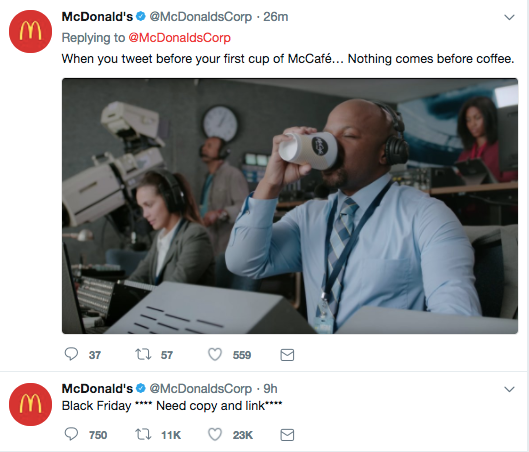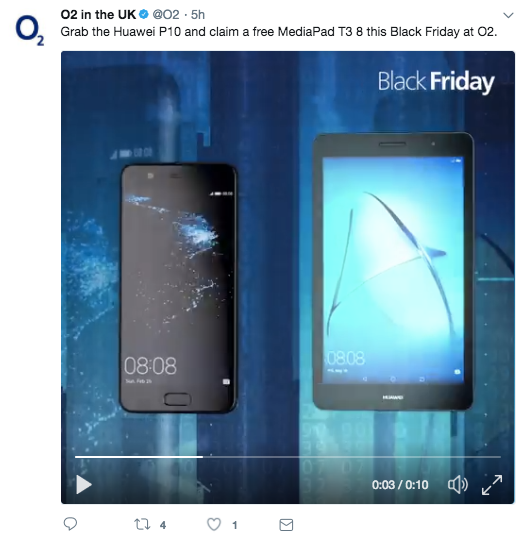The frenzy of Black Friday shopping brings ample opportunities for online retailers, with UK consumers spending 9.42 billion pounds on Black Friday weekend 2022. However, it can also lead to some frightful marketing mistakes if you're not careful.
With hordes of shoppers frantically filling up their virtual carts in hopes of snagging the best deals, it's no surprise that many of those baskets are later abandoned when impulse shopping wears off.
As we approach the chaotic sales event this year, let's explore some of the biggest black Friday marketing mistakes brands have made. By learning what pitfalls to avoid when devising your Black Friday promotions and online sales strategy, you can prevent your own retail horror story from unfolding.
The thrills of the shopping season shouldn't come with chilling consequences for your bottom line, so read on for tips to avoid the most common mistakes brands make that leave customers spellbound for all the wrong reasons.
Social Setbacks…
One of the most famous Black Friday social media horror stories is McDonald’s accidental “Hit send”. Back in the days of early Twitter, McD’s accidentally posted a placeholder message to tens of thousands of followers.

It’s nice to know that it goes wrong for mega corporations sometimes too. However, the mistake actually created an unintended viral moment which may well have drawn more attention to the deal than any polished ad copy, with over 11 thousand retweets.
Really more embarrassing was O2’s 2017 attempt at promoting a Black Friday deal on social media. They may have posted what they intended to, but - as Jane Austen would say - it was badly done indeed.

The unexceptional video clip went up on their Twitter with no eye-catching emojis, no hashtags to draw the attention of Black Friday bargain hunters and, let’s be honest, quite basic copy. From their 344K followers, they received a grand total of 4 retweets. Ouch.
From these case studies, we can draw the lesson of how important it is to understand the channels you’re using for promotion, both in terms of the tools available and what’s going to engage the users there.
At the time, tagging was a hugely important aspect of social promotion that O2 missed entirely. Mcdonald’s mistake, on the other hand, was funny, memorable, and came across as an authentic moment, the perfect recipe for a viral 2017 Tweet.
Too Much, Too Young
The fast fashion brand Pretty Little Thing received widespread backlash in 2021 after advertising an “up to 100% off” Black Friday sale.
This came from two sides: Those who were disposed to criticise fast fashion generally felt it devalued the workers who made the garments, and emphasised how little they must be being paid.
On the other hand, those who were initially excited about the concept of the deal were disappointed about how it was carried out. Although a limited number of items were available for free as advertised, many popular lines which had been included in previous Black Friday sales weren’t discounted at all.
While the sale successfully drew headlines, much of it wasn’t positive press and many existing loyal customers went elsewhere for their holiday shopping.
Much of this could have been avoided if the clothing brand had paid closer attention to their customer data before formulating their seasonal marketing efforts. They could also have considered surveying their existing customers.
This could have given them information about what line discounts would have created the most hype within their target market and feedback might have given PTL a heads up about the ethical concerns customers may have about a “100% discount”, allowing them to address this early.
There’s also the marketing issue of consumers not receiving what they believe was promised, which brings us to…
Tell the Truth, The Whole Truth…
Knomo, an upmarket London bag brand, lost fans and alienated people during its 2019 campaign. The creatives advertising the sale in the run up to Black Friday promised 30% off certain products. However, when Black Friday came around, shoppers were disappointed to find that the discounted products were only available in specific, less desirable colours.
Not only did this dissuade some from making a purchase, but disappointed customers took to Social Media to complain. Less-than-ideal Black Friday sales numbers and a damaged reputation aren’t Christmas presents any business would like to receive.
It can be difficult to balance catchy deal copy with balancing customer expectations. However, stories like this show that it’s important to be as clear as possible about what your deal is going to cover.
When buyers wait for Black Friday to make a purchase, they delay gratification. If what they spend time anticipating isn’t then what they get, this can have a particularly bad impact on their relationship with your brand.
Remember, you can convey meaning through your ad images and smaller text as well as your headline deal. Ideally, you should aim to make the exact thing you’re putting on sale look amazing, rather than over-promising or staying vague in the hope that clients will think your deal is better than it is.
Rotten Returns
So, you’ve nailed down the details of your online shopping deal, thought through your cart abandonment strategy, and checked your ads for embarrassing errors… what’s left? Oh, right, considering your return policy.
Many brands have an extended holiday return policy to cover unwanted gifts or correct sizing mistakes. This works as a welcome show of good faith from businesses and helps to give shoppers the confidence to commit to big price items.
However, at the very start of the Christmas period, it’s all too easy to forget to add an extended return policy to Black Friday and Cyber Monday deals. This has previously caused embarrassment for brands such as ShopBop, who received criticism from Black Friday Shoppers in 2021 for maintaining their 15 day limit on returns.
Brace for Impact
If you do your job well, Black Friday marketing campaigns can bring in a massive amount of traffic and orders. Over the years, even big brands have cracked under the pressure. 2014 was the first year in the UK where the surge in deliveries caused massive problems for businesses such as Amazon. In 2016, the PC World website crashed on the evening of Black Friday, making it difficult for shoppers to buy and the company to profit.
What can we take away from this? Well, before pouring everything on a giant Black Friday campaign, it’s important to understand the limits of your business. Consider the amount of stock you have available, how many staff (or which automations) are on hand to answer enquiries, how many users your website can handle at one time, and if your delivery partners can process the anticipated number of deliveries in good time.
After you’ve thought about this, you can either make the needed changes in infrastructure or re-think your campaign, perhaps to a great deal targeted towards a small group likely to buy high price items.
Linking Let-Downs
A recent informal study found that, for both medium and large businesses, there were often mistakes in Black Friday paid ads.
While some offered incorrect coupon codes, others included links to the wrong product or went to sites where the shopping trolley was inaccessible.
It feels obvious to say, but if you’re paying for holiday shoppers to click on your ad, any links and the shopping experience on your site need to be thoroughly tested and optimised. Make sure they’re tried out by trusted people outside your company as well as co-workers!
Read our top tips for successful paid ads
Ready, Set, Go
As the ghostly hours of Black Friday fade into cyber weekend, it's clear that this retail fright fest offers no shortage of terrifying pitfalls for marketers. From website breakdowns to making misleading claims about deals, we've explored some of the scariest marketing mistakes brands have made amidst the shopping hysteria.
Learn from the macabre lessons of Black Fridays past, and let them guide you to smarter strategies, happier customers, and revenues that are truly scary-good.
If you need a hand to hold, SpiderDigital is here to assist with our years of digital marketing experience in Paid Ads, Email, SEO, and more. Learn how we help businesses like yours or contact us today.

-1.png)